Pushing The Profile
A collaborative effort by three grinding companies has resulted in a process for creating profiles in diamond grinding wheels. It solved a knotty manufacturing problem for one Connecticut manufacturer and holds promise for others.
It may take two to tango, but sometimes it takes even more than that to design and execute a new manufacturing process. CiDRA Precision Services benefited from the combined services of three companies, each with a different grinding specialty. These three companies worked together to create a process solution that made parts faster and better and resulted in a reduction in capital equipment requirements for the manufacturer, CiDRA.
That's not bad from a customer's perspective. It's good for the suppliers too, because they now have a proven process that has applications beyond what CiDRA is doing. Call it win-win.
To Be Precise . . .
Founded in 1996, CiDRA designs and manufactures high-precision optical components and modules for networks and real-time monitoring solutions for scientific and industrial applications. The company's founding products were higher resolution fiber optic pressure sensors. These were designed for use in very nasty places, such as the bottom of an oil well. Fiber optic sensors, developed in-house, were used to permanently monitor the oil well to help the operator maximize the extraction of oil from the reservoir.
This hostile environment generates pressures of 20,000 psi and temperatures of 200°C. These sensors must survive and work uncalibrated for 10 years in a hot, wet and very dirty environment.
Successful development of precision machining processes for the glass elements that went into these devices was the genesis for the company's Precision Services Division, which now parlays those captive skill sets into a business. This division manufactures high-precision mechanical components from a variety of difficult to machine materials.
Commercializing the processing skill sets that it takes to make the company's products has led CiDRA to develop its precision machining capability as part of its multi-industry high technology focus. Think of this division as a very high-tech job shop. To serve its internal and external customers, the company has invested significant capital in precision manufacturing and inspection equipment with processing capabilities that include precision grinding, sawing and polishing of difficult materials to tolerances within 2 microns.
These difficult materials include glass, quartz, ceramics, sapphire and hard metals. Processing these materials—specifically, the ability to form grind them in a single plunge using superabrasive diamond wheels—is the focus of this article. The development of the process involved three companies that worked in concert to solve a difficult processing problem and the results perhaps represent a precursor of how future process solutions may pan out.
Risk/Reward
The prime driver to look at a different method for the company's precision grinding operation came from trying to process a relatively high volume of parts. These were glass parts for the telecommunication industry, which at the time was very busy.
"In a relatively short period of time, we needed to gear up to run 10,000 to 20,000 discreet parts a month across our Agathon centerless grinders," says Kirk Schoell, operations manager for the Precision Service Division. "Our original grinding process entailed nine different grinds to create the complex profiles on the part. A limiting factor was the resin bond wheels we were using. These wheels had to be dressed off-line and only allowed very basic profiles and simple geometries to be dressed into the wheel. That necessitated more wheels and more machining steps to complete a part."
Mr. Schoell was caught in the proverbial cross hairs of satisfying an increased production schedule and asking for capital outlay to make it possible. Traditionally, if you need to make more parts, and you have a proven process, a shop simply buys more machines and tools them up. "That's the tried and true way of increasing capacity," says Mr. Schoell. "It's the safer course for the manager whose responsibility is getting good parts out the door." But that's not what CiDRA did.
Change The Process
Using CiDRA's existing process to meet the higher production volumes would require that the company increase its centerless grinding capacity from four to nine machines. In addition to the capital investment required, adding machines only met the current production demand. It left little room for additional capacity.
The idea of doing something different started on the shop floor. CiDRA's cell leader, Rich Dills asked, "Why can't we replace our multi-step, multi-machine process for profile grinding with a single plunge grinding operation? We could dramatically increase the workflow across our existing machines and reduce the need for some of the additional capital outlay." That started the investigation into an alternative process.
Mr. Schoell asked Mike Lagace, the senior manufacturing engineer, to investigate the feasibility of Mr. Dills' idea. Mr. Lagace brought together three companies to see if Mr. Dills' idea had practical merit. Agathon provided centerless grinders, S.L. Munson & Company contributed grinding wheel technology and Applied Grinding Technologies provided wheel dressing expertise.
At first blush, the news wasn't good. Form dressing the grinding wheel with the highly accurate profiles necessary was not feasible using the company's current off-line process. The solution would require on-machine CNC profile dressing to achieve accuracy. The other hurdle was to find wheels that could be dressed and produce an optical quality specification. In spite of the challenge, the up side for CiDRA, if this concept could be made to work, was too good to dismiss out of hand.
Building A Solution
The new wrinkle that CiDRA and its vendors came up with first required a change from resin bonded diamond wheels to vitrified bonded wheels. These are dressable, with the ability to accept CNC profile of very fine contours. These accuracies are in the ±0.001 mm range.
A new dressing process, patented by Dr. Kaiser (Celle, Germany), is called rotary point dressing. It provides on-machine dressing of vitrified bonded diamond grinding wheels. This was combined with the correct wheel specification, using very fine grain abrasive, to achieve the surface finish required.
Typically, a form diamond roll dressing process requires the use of a relatively robust dressing system. In effect the diamond dressing wheel "ground" the diamond grinding wheel as a result of a speed differential between the two wheels.
In rotary point crush dressing, the surface speed of the grinding wheel and the surface speed of the dressing disk are synchronized. This creates virtually a single point of contact between the diamond grinding wheel and the dressing disk. Because there is no slippage between the diamonds, forces are lower and a thinner dressing disk can be used.
The point dressing process differs from traditional crush dressing by fracturing the vitrified bond that holds the diamond grit as opposed to fracturing the grit itself by shearing motion from a speed variance. Thinner disks actually work better for this task and thus allow finer profiles to be formed in the wheel.
S.L. Munson supplied CiDRA with both the dressing wheel from Dr.Kaiser and the grinding wheel from DWH. A hard, vitrified wheel was specified for the CiDRA application. To allow the profile to be formed in the wheel, its depth of diamond and binder is 10 mm on the radius or 20 mm on the diameter. The wheel supplier, DWH, has a proprietary molding process that forms the rough profile in the wheel. This reduces the amount of expensive diamond that must be dressed out of the wheel to get to the final form. On the machine, the rough form passes remove about 10 microns of material. The final dressing to size takes off 2-3 microns of material.
To maintain the synchronous speed between the dressing wheel and the grinding wheel, which is a net zero relative speed, the dresser unit must have very fine speed control. Applied Grinding Technology (AGT) developed an accurate two-axis CNC unit that replaced the template-dressing unit on the Agathon machine. It is full CNC, providing sub-micron positioning resolution to the dressing wheel. Moreover it's programmable to compensate for speed variations as the dressing wheel rises and falls into various profile features of the grinding wheel and maintains the net zero relative speed.
AGT designed the CNC dressing system unit specifically to fit the Agathon machine. The unit included an electric motorized dressing spindle for precise speed control, CNC control and an acoustic sensing system that could detect when the wheel was fully dressed and could be used to prevent damage in the event of a crash. The unit enabled CiDRA to use the rotary point crush dressing process in situ, eliminating the off-line dressing steps. The control software had the ability to easily program profiles at the machine, or profiles could be generated with a CAM system off-line. With some advanced features in the software, shape correction could be easily achieved. For even more accuracy, Mr. Lagace came up with an offset routine for the dresser unit that programmed a slight inverse into the nominal profile to compensate for deflection of the workpiece in the grind.
Results
The net result to CiDRA for implementing the rotary point crush dressing on its Agathon centerless grinders was a reduction in cycle time per part from 2 minutes to 37 seconds. Nine machining steps were reduced to four.
Throughput was also dramatically increased, obviously because of the cycle time reduction, but also because of the elimination of off-line wheel dressing and the attendant setup of truing in the dressed wheel when it was mounted on the machine. The parts come off the grinder ready for inspection. The rotary point crush dressing system gives more consistent results in part accuracy.
According to Mr. Schoell, "using our existing grinding machines, we were able to meet the production demands originally needed and increase the shop's overall capacity by 75 percent. We went from requiring nine grinding machines just to make production to a significant increase in overall shop capacity using our existing four machines. It was risky to try unproven technology, but the rewards have been tremendous."
More Than Glass
The specific production advantages of the rotary point crush dressing process are transferable. CiDRA is applying them to other hard materials as jobs come up. Basically, if a material needs superabrasive wheels, it can use this dressing system. Of course not all grinding applications need the extremely high accuracies that CiDRA meets, but the production advantages gained from a single plunge profile have wide application in many shops.
Related Content
How to Start a Swiss Machining Department From Scratch
When Shamrock Precision needed to cut production time of its bread-and-butter parts in half, it turned to a new type of machine tool and a new CAM system. Here’s how the company succeeded, despite the newness of it all.
Read MoreVolumetric Accuracy Is Key to Machining James Webb Telescope
To meet the extreme tolerance of the telescope’s beryllium mirrors, the manufacturer had to rely on stable horizontal machining centers with a high degree of consistency volumetric accuracy.
Read MoreInside an Amish-Owned Family Machine Shop
Modern Machine Shop took an exclusive behind-the-scenes tour of an Amish-owned machine shop, where advanced machining technologies work alongside old-world traditions.
Read MoreChoosing a Five-Axis Machine Tool With Automation in Mind
While much focus is placed on the machinery that moves parts, the features most important for automating five-axis machining are arguably found in the machine tool itself.
Read MoreRead Next
3 Mistakes That Cause CNC Programs to Fail
Despite enhancements to manufacturing technology, there are still issues today that can cause programs to fail. These failures can cause lost time, scrapped parts, damaged machines and even injured operators.
Read MoreThe Cut Scene: The Finer Details of Large-Format Machining
Small details and features can have an outsized impact on large parts, such as Barbco’s collapsible utility drill head.
Read More




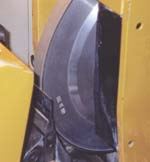
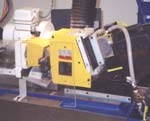
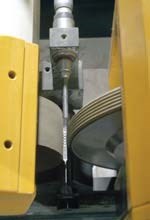

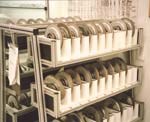
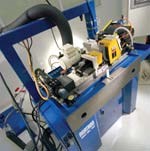







.png;maxWidth=300;quality=90)




.png;maxWidth=300;quality=90)













